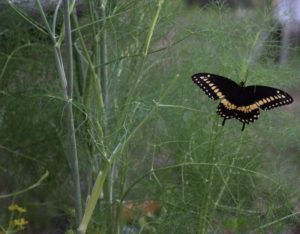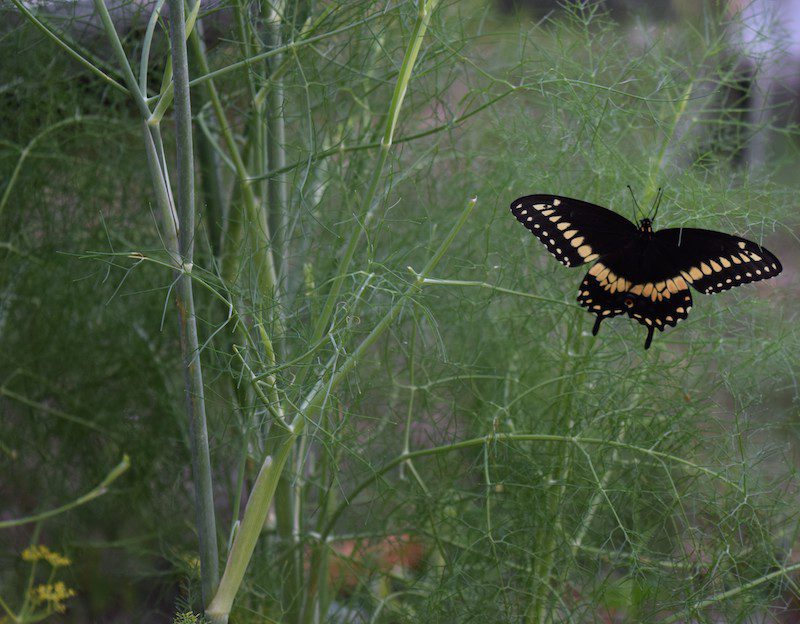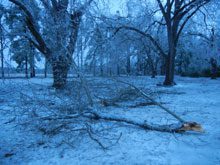Who doesn’t love a good story? The lore of plants is ingrained in the history of humans. Every culture has come up with explanations of the natural world and the interplay of plants, animals, and people.
The Parsley family has its fair share of these tales. Consider the Eryngium yuccifolium which is a statuesque herbaceous perennial native to the tallgrass prairies of central and eastern North America. The leaves are blue- green and linear like a yucca. Like yucca leaves they were crushed and made into twine and fiber. Instead of umbels its flowering parts are round, white, or light green spikey orbs. Rattlesnake master has a couple of other common names: button Eryngo, snakeroot, and button snake-root. It is a very striking looking plant often visited by bees, wasps, beetles, and butterflies for its pollen and nectar.

Black Swallowtail on Fennel
The roots of the plant were thought to cure bites from rattlesnakes. And just as good if not better, Shamans would chew the roots and blow onto their hands before ceremonial handling of rattlers. While I hope to never need these services, I am stocking up on plants, just in case.
We may have to infer the stories behind other “colorful” family members of the Apiaceae family. Sweet Annie or Bishop’s weed may be pretty but can be nuisance invasive pest plants. Unfortunately, exotic invasive plants overstep their boundaries and can displace native species. Queen Anne’s Lace sounds like something that every gardener would want in an arrangement, and there are two species one introduced Daucus carota and one native D. pucillus. The latter is also called American Wild Carrot or Rattlesnake weed. Since most members of the family have large fleshy tap roots the garden varieties of carrot are all domesticated forms of the D. carota.
Marshy freshwater or tidal wetlands are favorite hangouts for carrot family representatives, and while some are very common some are quite rare. Canby’s dropwort or Canby’s cowbane Tiedemannia canbyi is found in only a few locations in South Carolina and Georgia. Found regionally in or near Carolina Bays several populations are being successfully managed by state and federal conservation groups.
The Apiaceae family checks so many boxes for gardeners, they host black swallowtail butterflies and make great companion plants in the garden. The flowers supply nectar pollen, and the small inflorescences attract ladybird beetles, parasitic wasps, and other predators. Leaves, stems, seeds, and essential oils are used for food and flavoring. Many can be used as perennial and annual groundcovers or cut flowers.
Don’t forget whimsy. Plants have names and stories, and the carrot family has been around long enough to use a Shepherd’s needle, Venus’ comb, and walked on Fiddle crab turf. You can have prosperous groundcovers like pennywort and coinleaf. Plant the cowbane and hemlock away from the celery and parsley and keep growing lots of Rattlesnake master. This family has it all.









